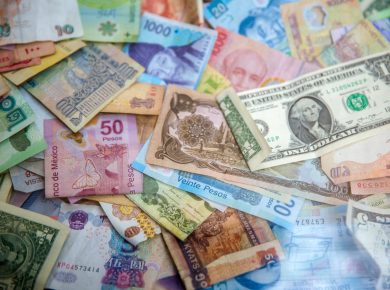A Publishing house is a company which prints and publishes. The prints can be books, while the soft can be online publishing. Many people want to read the clear-cut instructions on how to map out the plans to set up a standard publishing house producing both print and soft copies for the end users.
It may be boring if you have to read the lengthened essay because of its complexity. This article has made every aspect possible to clearly understand the basic requirements and essentials you will need to set up a standard publishing house.
The readers testify to the publishing pages when they read the article. Start from basic requirements until you are exhausted with your jot material and pen, and begin to draw your plan for setting up a standard publishing house.
Basic requirements in book publishing
- Passion for reading
- Determination for hard work and a first university degree
- Keen interest in production
Preliminary step in establishing publishing
- Do a business plan: pricing, financing, location, mission statement, serving better, target audience, etc.
- Determine your market.
- Plan your marketing campaign.
- Give your publishing house a clear name.
- Determine the type of publishing.
- Determine the hierarchy.
- Make plans for distributions.
Major Publishing Divisions
- Editorial
- Production: Design Unit, Desktop Publishing, Print Unit, Graphic illustrations
Book publishing chain
- Acquisition of manuscripts, both solicited and unsolicited
- Assessment of the manuscripts
- Editing of the manuscripts
- Design and production
- Sales and marketing
- Distributions
- End users
Assessment
Assessment is the process of judging whether the written materials are publishable or not. There are different criteria to consider when we are doing an in-house assessment before the report of the manuscripts can be successful. In educational publications, there are solicited and unsolicited manuscripts. Both of them will be assessed, and the assessors will give the report accordingly.
Manuscript acquisition and assessment
- Raw material to publish as books
- The books to republish them
- Scripts that are manually written, either solicited or unsolicited
How and where to generate the manuscripts
- Hunting for good authors
- Looking for contributors and reviewers
How is an in-house assessment done
- Readership potentials
- Coverage
- Contributions
- Language and styles
- Violations of privacy
- Suitability of the title
- Objectives
- The vision of the company
Editing
Editing is regarded as the process of preparing the assessed manuscripts for publication. There are different types of editing, depending on the kind of manuscripts or scripts. The editing includes technical editing, substantive editing, content editing, copyediting, scientific editing, and developmental editing.
Tools and levels of editing
- Dictionary and thesaurus
- Accuracy of content
- Appropriateness of language use
- Organisation of content and language
- Proper references
- Target audience
- Possible errors and facts
- Insertions of relevant pictures, images, and illustrations
- Check the typesetter’s work
- Capitalization
- Refine in a clear and easy-to-read
- Not ambiguity and vagueness
- Avoid noun strings
- Check your editing; never assume
- Check proofs always
- Unit measurement
- Consistency of Page numbers
- Manage efficiently, time and materials
Book design
Book design is the process of getting the edited manuscripts ready for publication in book form. When the artist designs, he or she plans to make the best out of the book. It is a way of giving you the template of the book. The artist’s design for how the book will look is called a template.
Page elements in book design
- Content and content/letter characters
- Format and style
- Pictures/images/illustrations
- Text
Elements of design
- Coherence
- Consistent style
- Harmony
- Running head, that is, on the head of the book
Qualities of design
- Quality of production (Printing)
- Quality of Finishing
Book structure
- Inside the book
- Inside front cover
- Outside back cover
- Inside back cover
- Outside front cover
Outside front cover
- The title of the book
- The author and authors of the book
Inside front cover
- Preliminary matters, such as
- Full title
- Page
- Author or authors
- Year of publication
- Copyright page
- Name of publisher
Main text matter
- Fundamental manufacturer of the book
- Chapters
- Modules
- Segments
- Sections
- Stanzas
- Lines
- Pagination
- Listing building and flipping the title
Inside the book
- End matter of the book
- Index
- Glossary
- Word list
Outside back cover
- Blurb
- The author or About the author
- Catalog information
- ISBN
- Publisher
- Recto and Verso
Book production
The book production is explained as the actual manufacturing of the book. After the design is completed and satisfactory, the production processes will take place. The printing of the books must be of good quality. The quality of production and quality of content influence the customers to buy the book, such as compilation of quality, presentation of ideas, language use, and sequence. The production stages are divided into three aspects.
Pre-press is the first stage
- Planning
- Filming
- Softcopy
Press at the second stage
- Printing
- Actual press where the jobs are done
Post-press is the third stage
- Folding
- Collating
- Stitching
- binding
- Finishing
Materials used in book production
- Text Paper
- Bond paper in different sizes
Skills in quality production
- Capacity of the authors
- Organizational Philosophy
- Publishing program
- Capacity of editors
- Intellectual capacity
- Technical capacity
- Human relations capacity
- Environmental capacity
Cost Management and Book Pricing
Cost: Cost can be seen as the amount paid or given up to gain an object of production. It may be the value of money used to produce something. The cost must usually be evaluated before one goes into producing books. In costing, the following criteria should be considered.
Criteria to consider in costing
- Materials
- Time-consuming
- Risk incurring
- Opportunity cost
- Delivery of goods and services
- Resources
Management: Management can be regarded as the ability to handle the resources wisely and effectively, as the coordination of the organisation to achieve the goals, and an effective, careful, and judicious company resource for organisational growth and the development and profit-making. There are four major functions of management.
4 major functions of management
- Learning
- Organizing
- Directing
- Controlling
Cost Management: Cost Management is the process of planning and controlling the budget of an organisation or business enterprise that includes planning, estimating, financing, and budgeting.
- Resource Planning
- Cost Estimating
- Cost budgeting
- Cost controlling
Cost budgeting is the overall idea of money to spend on the project, while cost controlling is the application of a procedure to monitor all expenditures.
Pricing mechanism
The pricing mechanism is defined as the amount given by one party to another in exchange for goods and services obtained. It is also the amount for which something is sold; money for someone changing for parting, etc. Fixing the price entails calculation and estimation. So, the price mechanism is the method of fixing the price of a book in publishing.
Types of price
- Coasted price/unit price: It is the price that is the retail price for a single item sold. It can increase if the quantity is low. It can also decrease if the quantity is high.
- Selling price: This price comprises production costs such as the cost of printing and the cost of materials.
Factors for Fixing Price
- Considering the market
- Considering the competitors
- Considering the growing concern about the products
- Reading population
- Specification
- Colour and illustrations
- Page extent
- Types of paper
- Types of finishing and filming
- Sales and marketing
- Profit margin
Paper sizes
- 70gm bond 20×30
- 70gm bond 2x5x36
- Malt paper (cool soft)
- Art paper (Glossary) 24.5×33
- Pelican card 250 gm
Advantages of the pricing mechanism
- To keep costs under control
- Profit and Loss Account
- To set a competing price
- To regulate our profits
- To improve content quality
- To resolve what to publish, where to publish it, how to publish, and when to publish it.
Sales, marketing and distribution
This is the process of presenting the ready products to the end users or the target audience. There is a department for this job in a well-structured publishing company. The products will have to be distributed to different branches and outlets of the company, from which the marketers and sales representatives will get them to the end use, such as schools, bookstores, bookshops, learning institutions, etc.
End users
These are people buying the products, or they are the target audience for which the products are produced. They are the reasons why the publishing houses are established.








